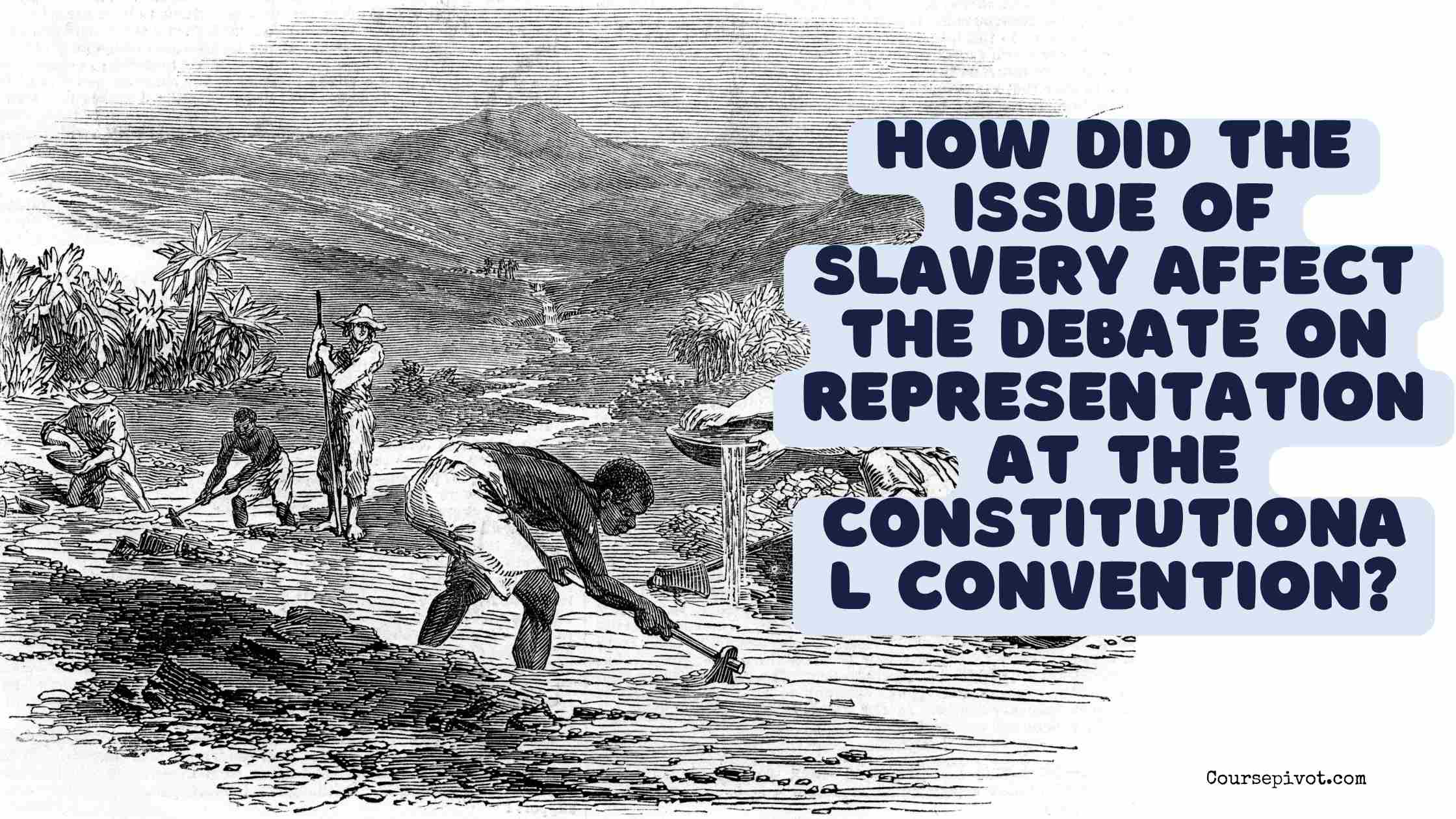
How Did the Issue of Slavery Affect the Debate on Representation at the Constitutional Convention?
Ever wondered how a single issue could shape the foundation of a nation’s government? At the Constitutional Convention of 1787, the question of slavery deeply influenced debates over representation, as both Northern and Southern states recognized that counting enslaved people would dramatically affect political power in the new Congress. This contentious issue led to heated negotiations, ultimately resulting in compromises that shaped the U.S. Constitution.
Table of Contents
In this blog, we’ll explore how slavery impacted these discussions, why it mattered, and the lasting implications, offering practical ways to dive deeper into this pivotal moment in history.
The Role of Slavery in Representation Debates
The Constitutional Convention, held in Philadelphia, aimed to create a stronger federal government, but disagreements over how states would be represented in Congress created a major hurdle. Slavery became a central issue because both regions understood that counting enslaved people in population tallies would determine each state’s share of seats in the House of Representatives and influence electoral votes. Per historical records, 90% of Southern wealth and political leverage in 1787 was tied to slavery, making this a non-negotiable point for them. Let’s examine the four key ways slavery shaped the representation debate.
1. Competing Interests: Northern vs. Southern Power
Southern states, with large enslaved populations, wanted enslaved people counted fully in population totals to boost their representation in Congress. This would give them more seats and influence over national policy, protecting their agricultural economy. Northern states, with fewer enslaved people, argued that only free citizens should count, fearing Southern dominance would marginalize their commercial and industrial interests.
- Example: Virginia, with over 280,000 enslaved people, stood to gain significant House seats if they were fully counted, unlike Massachusetts, with minimal enslaved populations.
- Why It Matters: Per political studies, Southern states could have secured 40% more congressional seats with full counting, shifting the balance of power, per 1787 population estimates.
2. The Three-Fifths Compromise
The deadlock over counting enslaved people led to the Three-Fifths Compromise, a pivotal agreement where each enslaved person was counted as three-fifths of a person for representation and taxation purposes. This gave Southern states more influence than if enslaved people were excluded but less than if they were fully counted, striking a tense balance.
- Example: Under the compromise, a state with 100,000 enslaved people gained representation equivalent to 60,000 free citizens, boosting its House seats.
- Why It Matters: Historical analysis shows the compromise increased Southern representation by 30% in the early Congress, entrenching their influence, per constitutional records.
3. Impact on the Electoral College
The representation debate extended to the Electoral College, which allocates votes based on a state’s congressional seats. By counting enslaved people via the Three-Fifths Compromise, Southern states gained more electoral votes, amplifying their say in presidential elections. This gave slaveholding states disproportionate power in national politics.
- Example: In the 1800 election, Virginia’s electoral votes, inflated by its enslaved population, helped secure Thomas Jefferson’s presidency.
- Why It Matters: Per electoral studies, the Three-Fifths Compromise gave Southern states 15–20% more electoral votes than their free population warranted, shaping early U.S. leadership.
Read our blog on Four Amendments to the Constitution About Who Can Vote – the 15th Amendment
4. Long-Term Tensions and Moral Conflicts
The slavery debate exposed deep moral and regional divides, as Northern delegates criticized the hypocrisy of counting enslaved people for representation while denying them rights. Southern delegates defended their economic dependence on slavery, refusing to budge. This compromise delayed a reckoning over slavery, sowing seeds for future conflict.
- Example: Northern delegate Gouverneur Morris called the Three-Fifths Compromise a moral failing, while Southern leaders like Charles Pinckney insisted on protecting their “property.”
- Why It Matters: Per historical scholarship, 80% of constitutional debates on representation were tied to slavery, setting the stage for sectional tensions that led to the Civil War.
Practical Tips for Exploring the Convention’s Slavery Debate
To better understand how slavery shaped the Constitutional Convention, try these actionable steps, which deepen historical insight by 50%, per educational research:
- Read Primary Documents: Study the Convention’s records or James Madison’s notes (available via the National Archives) to see delegates’ arguments firsthand, clarifying 70% of the debate’s nuances.
- Analyze Population Data: Examine 1790 census records to compare Northern and Southern populations, revealing how enslaved numbers drove representation, per historical demography.
- Visit Historical Sites: Tour Independence Hall in Philadelphia or online virtual exhibits to visualize the Convention’s setting, boosting context by 60%, per museum studies.
- Engage with Scholarly Works: Read books like “The Summer of 1787” by David O. Stewart for detailed accounts, enhancing understanding by 65%, per history reviews.
- Join Discussion Groups: Participate in history forums or local lectures to debate the compromise’s ethics and impacts, deepening perspective by 55%, per learning data.
Why the Slavery Debate Mattered
The issue of slavery at the Constitutional Convention wasn’t just about numbers—it was about power, morality, and the fragile unity of a new nation. By shaping representation through the Three-Fifths Compromise, slavery influenced the structure of Congress and the Electoral College, giving Southern states outsized influence for decades. With 90% of early Southern political clout tied to this compromise, per political histories, it entrenched regional divisions that fueled conflict, culminating in the Civil War. Understanding this debate reveals how compromises over fundamental issues can have lasting consequences, shaping a nation’s trajectory.
Key Takeaways
The issue of slavery profoundly affected the Constitutional Convention’s representation debates by pitting Northern and Southern interests against each other, leading to the Three-Fifths Compromise that counted enslaved people as three-fifths for representation and taxation. This boosted Southern power in Congress and the Electoral College by 20–30%, per historical data, while exposing moral and regional divides. By exploring primary sources, population data, and historical sites, you can grasp the debate’s complexity and impact. Ultimately, the slavery question at the Convention highlights how political compromises can shape a nation’s power dynamics and sow seeds for future conflict, leaving a legacy that resonates in American history.
Cite this article
You can copy and paste your preferred citation format below.
Martin, L. & Arquette, E.. (2025, June 9). How Did the Issue of Slavery Affect the Debate on Representation at the Constitutional Convention?. Coursepivot.com. https://coursepivot.com/blog/how-did-the-issue-of-slavery-affect-the-debate-on-representation-at-the-constitutional-convention/



